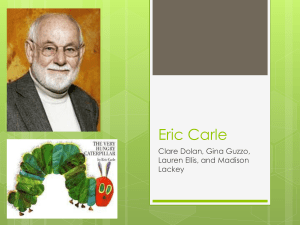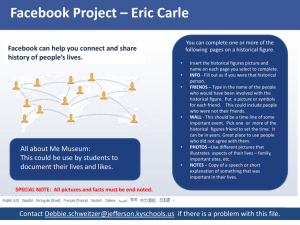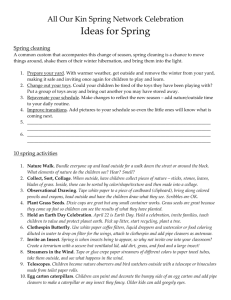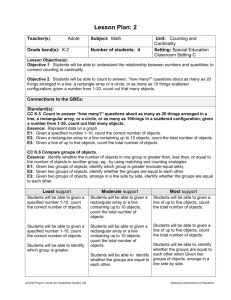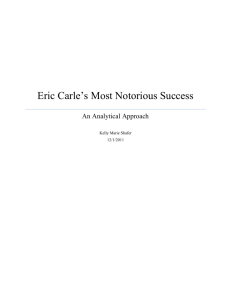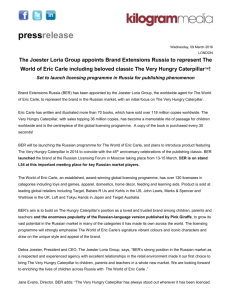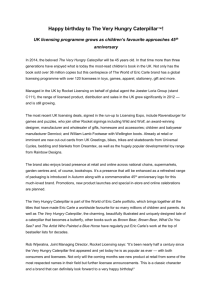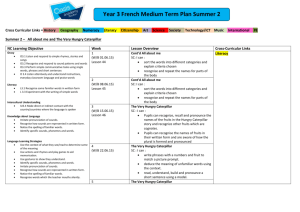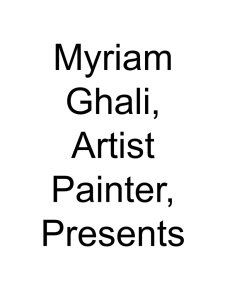the study guide by clicking here.
advertisement
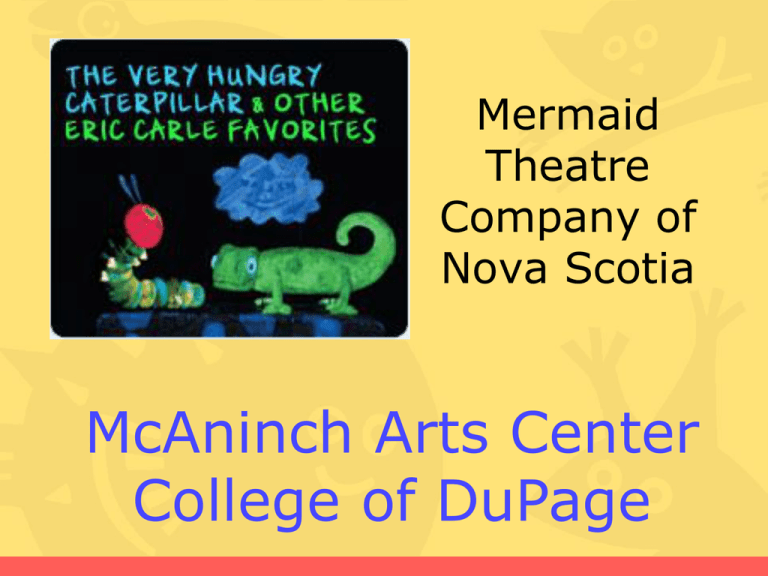
Mermaid Theatre Company of Nova Scotia McAninch Arts Center College of DuPage About Mermaid Theatre Company • Founded in 1972, based in Windsor Nova Scotia, Canada • Performed for more than four million spectators on four continents and in fortyeight states in the USA • Each year, Mermaid Theatre presents 400+ shows for 200,000+ audiences Vocabulary and Show Etiquette These are items that students should be familiar before coming to the show • Black Light: Black lights look purple, but most of the light it emits is in the ultraviolet (UV) range of the spectrum, which is invisible to the human eye. Under a UV light, fluorescent colored items emit a bright glow. Watch https://www.youtube.com/watch?v=ps80qZbbdbM to understand more. Black light is used in the performance on the puppets. • Uses of Black Light: Money security, Reveal germs in bathroom and restaurants, Expose finger prints in crime scenes, In space exploration to show cracks or leaks in shuttles and telescopes. • Puppetry: an art form in which objects are brought to life by puppeteers. • Narration: the story is told through the use of a narrator who recites the book’s text verbatim. • Non-shushing show: Students are encouraged to clap and laugh when they see something that pleases them. They may also help tell the story along with the narration. Noises that help tell the story are okay – side conversations are not. About Eric Carle • Born in Syracuse, New York in 1929 – moved to Germany when he was six years old. • 1952, he arrived in New York and found a job as a graphic designer with The New York Times. • Bill Martin, Jr., asked Carle to illustrate a story he wrote (Brown Bear, Brown Bear, What Do You See?) based on a striking picture Carle had made of a red lobster for an advertisement. This was the beginning of Eric Carle’s career as illustrator of more than 70 books, many that he wrote. • Eric Carle uses a Collage Style – using hand-painted papers, he cuts and layers to form bright and cheerful images. • Visit his website at http://www.eric-carle.com/home.html Classroom Activities The Very Hungry Caterpillar Move to the Life Cycle of a Butterfly 1. Egg: hold ankle, bend down, become round like an egg 2. Larva/Caterpillar: squirm and eat 3. Pupa: move into a pretend cave or use pillowcase/blanket. Be still. Have colorful kerchiefs. 4. Butterfly: Pop out of the bag and sway with kerchiefs Classroom Activities The Very Hungry Caterpillar Sit in a circle and complete the following statement 1. My name is _______________ (first name) 2. And I am VERY ________________ (adjective) Expanded activity • Use an adjective that begins with the same letter as their first or last name • Use an adjective that has more than four letters, or more Classroom Activities The Very Hungry Caterpillar ABCDEFGHI JKLMNOPQR STUVWXYZ Students cut twenty-six circles. Write a letter of the alphabet in each. Give students a green circle to represent the head and decorate. Then spell the following words using the circles to complete a caterpillar body. Inch Fruit Hungry Leaf Sun Pear Plum Cake Pie Oranges Classroom Activities The Very Hungry Caterpillar What food group does the picture belong to? Fruits Vegetables Meat Dairy Sweet Classroom Activities: Little Cloud Science Experiment: Condensation 1. Fill a glass with room temperature water 2. Fill a second glass with ice, then add enough water to fill the glass - Wait 3. Within a few minutes, condensation will appear on the outside of the glass containing ice Ask Questions: • Why is there water on the outside of the glass? • Where did the water come from? • Did the water drops soak through the glass? Explain that the water comes from the air. As the icy water cools the air around the glass, the water vapor it holds becomes liquid water droplets. Clouds form in much the same way as air rises in the atmosphere and gets cooled. Classroom Activities The Mixed-Up Chameleon • Create a book: The Mixed-Up Me • Each student creates a page for the book. • Ask students to think of an animal and select a feature of an animal they would like to have. • Hand out paper with the following on the bottom: I Wish I Had a ______ Like a ________. • Above the sentence, draw a picture of themselves with the animal feature they chose. • Put the images together and read the book as a group. Assessment Activity-Write a letter Goal: reflect on the performance experience and practice writing skills Activity: After the show, discuss the experience with students using these questions to guide the conversation: • What was the show about? • What parts were most exciting? • Which character did you enjoy the most and why? • What did the characters find? What did they learn? • What was special about the puppets? Beginning of letter: Dear Mermaid Theatre performers: My favorite part of the show was… While watching your show I felt…because… I have drawn a picture of the scene when… If I could be in your show, I would play the part of…because… Mail your letter: McAninch Arts Center, 425 Fawell Blvd, Glen Ellyn, IL 60137 Post Show Discussion Questions • What was your favorite part about your trip to the McAninch Arts Center? • How was the performance different than the books? How was it the same? • What story was told First? Second? Last? • Were you able to see the puppeteers during the show? When? • Describe how the puppets looked: big, small, bendable, colors, serious, funny. • Do you remember any of the music from each story? If so, what did it sound like? Special Thanks SchoolStage Series is supported by a grant from the Illinois Arts Council. Sources •http://www.eric-carle.com/home.html •http://www.eric-carle.com/books.html •http://eric-carle.com/catexchange.html
